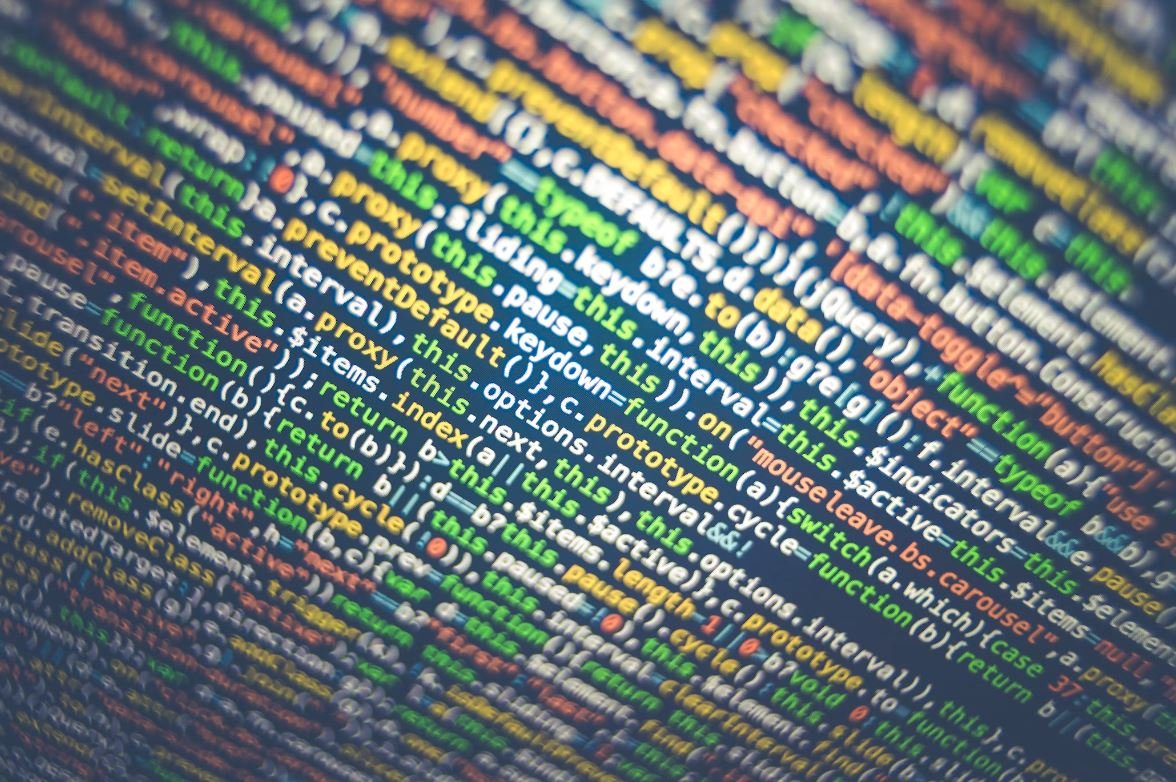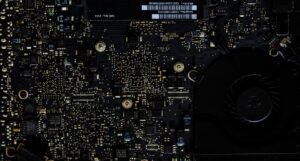Music Recording Software
Music recording software, also known as digital audio workstations (DAWs), is a vital tool for musicians, producers, and engineers to create, edit, and mix music on a computer. With the advances in technology over the years, these software programs have become increasingly powerful, offering a wide range of features and capabilities.
Key Takeaways:
- Music recording software, or DAWs, are essential for modern music production.
- DAWs offer a wide range of features, including recording, editing, and mixing capabilities.
- They provide a user-friendly interface for ease of use and intuitive workflow.
- Various DAWs cater to different preferences and genres.
- Many popular music recording software options exist, including Pro Tools, Logic Pro X, and Ableton Live.
**One of the most important aspects of a **music recording software** is its user-friendly interface**, as it allows users to easily navigate through the various features and functions. It should provide an intuitive workflow that simplifies the recording and editing process, allowing the artist to focus on their creativity rather than technical complexities.
Recording Capabilities
These software programs enable musicians to **record audio from various sources**, such as microphones, instruments, or MIDI controllers. They offer **flexible routing options** that allow users to control the input and output of audio signals. Some software even supports **multitrack recording**, where multiple audio sources can be recorded simultaneously, aiding in the production of complex music compositions.
*One interesting feature found in some music recording software is the ability to **automatically detect and categorize rhythmic patterns**, making it easier for producers to find the perfect drum loop for their tracks.*
Editing and Mixing Capabilities
Music recording software provides **powerful editing tools**, allowing users to cut, trim, and arrange audio clips with precision. They offer a multitude of **audio effects and plugins** to enhance the sound quality, as well as **real-time automation** for dynamic changes. Additionally, DAWs have **mixing consoles**, which enable users to adjust the volume, pan, and EQ of each track, creating a balanced and polished mix.
*An interesting aspect of music recording software is the ability to **visualize audio waveforms**, giving users a visual representation of the sound and aiding in accurate editing and mixing.*
Popular Music Recording Software Options
| Software | Features | Price |
|---|---|---|
| Pro Tools | Industry-standard, extensive plugins, professional mixing and editing tools | Varies (free version available) |
| Logic Pro X | Virtual instruments, MIDI sequencing, comprehensive library of sounds | $199.99 (Apple ecosystem only) |
| Ableton Live | Live performance features, real-time production capabilities, intuitive interface | Varies (free trial available) |
When it comes to music recording software, there are several top choices that many professionals and beginners prefer. **Pro Tools** stands as the **industry standard** and is used extensively in professional studios due to its robust features and plugins, making it suitable for professional mixing and editing. **Logic Pro X** is a favored option among Apple users, offering an extensive collection of virtual instruments and sounds, making it ideal for those looking to create electronic music. **Ableton Live** shines in live performances with its unique capabilities and user-friendly interface, making it a popular choice for electronic music producers.
Final Thoughts
Music recording software has revolutionized the way music is produced and recorded. **With a vast range of features, intuitive interfaces, and options to suit various preferences and genres, music recording software caters to the needs of musicians and producers**. Whether you’re recording a simple demo or producing a complex mix, having the right software can greatly enhance your creative process and ensure high-quality results.

Common Misconceptions
Misconception 1: Music recording software is only for professional musicians
One common misconception about music recording software is that it is only useful for professional musicians who have access to advanced equipment and a professional recording studio. However, this is not true. Music recording software is incredibly versatile and can be used by amateurs and beginners as well.
- Amateurs can use music recording software to experiment with different sounds and create their own compositions.
- Beginners can use music recording software to practice and improve their skills.
- Music recording software can be a valuable tool for music educators to teach their students about sound engineering and production.
Misconception 2: Music recording software is expensive
Another common misconception is that music recording software is expensive and only accessible to those with a large budget. While it is true that there are expensive professional-grade software programs available, there are also many affordable options for beginners and hobbyists.
- There are free or low-cost music recording software options available for those on a tight budget.
- Some music recording software programs offer monthly subscription plans, allowing users to pay a smaller amount each month instead of a large upfront cost.
- Many affordable music recording software programs offer a wide range of features and functionality that are suitable for most users’ needs.
Misconception 3: Only musicians can benefit from music recording software
It is a common misconception that only musicians can benefit from music recording software. The truth is that music recording software can be useful for anyone interested in audio production or sound engineering.
- Podcasters can use music recording software to record and edit their podcasts, adding background music or sound effects.
- Content creators can use music recording software to create and edit audio for videos or presentations.
- Sound engineers and producers can use music recording software to mix and master tracks for artists.
Misconception 4: Music recording software requires extensive technical knowledge
Some people may believe that using music recording software requires extensive technical knowledge and expertise. While there is a learning curve involved, modern music recording software has become much more user-friendly and accessible to beginners.
- Many music recording software programs offer intuitive interfaces and user-friendly features that make it easier for beginners to navigate and use effectively.
- Tutorials and online resources are widely available to help users learn how to use music recording software.
- Even without extensive technical knowledge, users can still create and produce music using pre-set templates and effects provided by the software.
Misconception 5: Music recording software limits creativity
There is a misconception that using music recording software can limit creativity by relying too heavily on pre-set sounds and effects. However, music recording software actually enhances creativity by providing a wide range of tools and options for experimentation.
- Music recording software allows users to record and mix different instruments and sounds, enabling endless creative possibilities.
- With music recording software, users can manipulate and edit audio tracks to create unique compositions.
- Many music recording software programs offer a variety of virtual instruments and effects that can be used to create original and innovative sounds.

Music Recording Software: The Best Options for Professional Quality
When it comes to creating music, having the right recording software can make all the difference in achieving a professional sound. Whether you are a beginner or an experienced musician, finding the perfect software that suits your needs and enhances your talent is essential. Listed below are ten top-notch music recording software options to help you bring your creative visions to life.
1. Logic Pro X
Logic Pro X is a powerful recording software exclusively available for macOS users. Renowned for its intuitive user interface and extensive range of virtual instruments, this software is a favorite among professional musicians. It offers advanced features such as professional-grade vocal tuning, extensive MIDI capabilities, and unparalleled sound library, making it ideal for music creators of all genres.
2. Ableton Live
With its versatile workflow and live performance capabilities, Ableton Live has become a staple in the music industry. This software allows artists to create music in real-time, with its unique interface designed for live performance and improvisation. It also offers a wide array of built-in audio effects, instruments, and loop-based production tools, making it a go-to choice for electronic music producers and DJs.
3. Pro Tools
Pro Tools is a powerhouse recording software used extensively in professional studios. Renowned for its robust editing and mixing capabilities, it provides an unmatched level of control and precision. Pro Tools supports a wide range of audio formats, making it a flexible choice for recording, editing, and mixing a variety of musical genres.
4. Cubase
Cubase is a versatile recording software suitable for both professionals and beginners. It offers a comprehensive set of recording and editing tools combined with advanced MIDI capabilities, making it a go-to choice for music producers, composers, and engineers. With its customizable interface and extensive virtual instrument options, Cubase empowers musicians to unleash their creativity.
5. Studio One
Studio One is a user-friendly recording software that balances functionality and simplicity. Its intuitive drag-and-drop interface and customizable workflow make it ideal for musicians who prefer a streamlined recording process. Studio One also offers a rich selection of virtual instruments, effects, and mastering tools, enabling users to achieve professional sound quality effortlessly.
6. FL Studio
FL Studio, also known as FruityLoops, has become a favorite among electronic music producers. This software boasts a visually appealing interface and a comprehensive range of built-in instruments, effects, and samples. Its step sequencer and piano roll make it easy to create complex melodies and beats, making it a popular choice for EDM producers.
7. GarageBand
GarageBand, available exclusively for macOS and iOS, offers a straightforward and user-friendly recording experience. Despite being a free software, GarageBand provides an array of powerful features, including virtual amps, guitars, and pianos. It empowers beginners to dive into music production and serves as a stepping stone for those looking to upgrade to more advanced software.
8. Reason
Reason is a unique recording software that emulates a virtual rack of instruments and effects. It offers a vast sound library and an innovative modular routing system, allowing users to experiment and create endless sonic possibilities. With its unique workflow and customizable interface, Reason appeals to musicians who seek a more unconventional approach to music production.
9. Reaper
Reaper is a cost-effective and highly customizable recording software suitable for professionals and enthusiasts alike. Known for its small file size and efficient performance, Reaper is compatible with both Windows and macOS. It offers unrestricted routing capabilities, advanced MIDI editing, and a wide range of built-in effects, making it a solid choice for musicians with unique recording preferences.
10. Adobe Audition
Adobe Audition is a versatile recording software that serves both beginner and advanced users. Known for its powerful editing and audio restoration tools, it is widely utilized in the radio, podcasting, and documentary industries. With its advanced spectral editing capabilities and seamless integration with other Adobe applications, Adobe Audition offers a comprehensive solution for professionals seeking high-quality audio production.
With a myriad of music recording software options available, finding the perfect fit for your creative journey can be a daunting task. Each of the ten software mentioned above brings its own unique features and capabilities to the table, allowing artists to unleash their creativity and achieve their desired sound. Whichever software you choose, whether it be Logic Pro X, Ableton Live, or any other, enjoy the process, explore its features, and let your musical visions come to life.
Frequently Asked Questions
What is music recording software?
Music recording software is a computer program used by musicians, producers, and audio engineers to capture, edit, and manipulate audio recordings. It provides tools and features to record, mix, and master music tracks, allowing users to create professional-grade audio productions.
What are some popular music recording software?
Some popular music recording software titles include Pro Tools, Logic Pro X, Ableton Live, FL Studio, Cubase, Studio One, and GarageBand. These programs offer a range of features and capabilities to suit different user needs and preferences.
Can music recording software be used for other audio tasks?
Yes, music recording software can be used for various audio tasks beyond music production. It can also be utilized for recording podcasts, voiceovers, sound design for multimedia projects, and even for mixing and mastering audio for video productions.
Is music recording software suitable for beginners?
Yes, many music recording software programs offer user-friendly interfaces and beginner-friendly features, making them accessible to newcomers. Additionally, there are online tutorials, courses, and communities available to help beginners learn and navigate the software.
What hardware is required to use music recording software?
To use music recording software, you will typically need a computer (PC or Mac) with sufficient processing power and memory, an audio interface to connect microphones or instruments to your computer, and studio monitoring headphones or speakers. Some software may have specific system requirements, so it’s important to check the specifications before purchasing.
Can music recording software run on a laptop?
Yes, music recording software can run on both desktop and laptop computers. However, it’s recommended to have a relatively powerful laptop with a fast processor and ample RAM for smooth operation, especially if you plan to work with large audio projects or use processor-intensive plugins.
Can music recording software be used with external hardware?
Yes, most music recording software supports integration with external hardware such as MIDI controllers, audio interfaces, synthesizers, and hardware effects processors. This allows users to enhance their workflow and expand their creative possibilities by incorporating a wider range of physical instruments and devices.
What formats do music recording software support for exporting audio?
Music recording software typically supports various audio file formats for exporting audio, including popular formats such as WAV, MP3, and AIFF. Additionally, some software provides the option to export to specific formats optimized for streaming platforms like Spotify or Apple Music.
Can music recording software be used for live performances?
Yes, music recording software can be used for live performances, especially with the advancement of technology. Some software offers live performance features, allowing musicians to trigger and manipulate sounds in real-time using MIDI controllers or other external devices. However, it’s crucial to have a stable and reliable computer setup for live use.
Is free music recording software available?
Yes, there are free music recording software options available, such as Audacity, Cakewalk by BandLab, and GarageBand (for macOS and iOS). While these free options may not have the same extensive features as paid software, they can still be powerful tools for basic recording and editing tasks.




